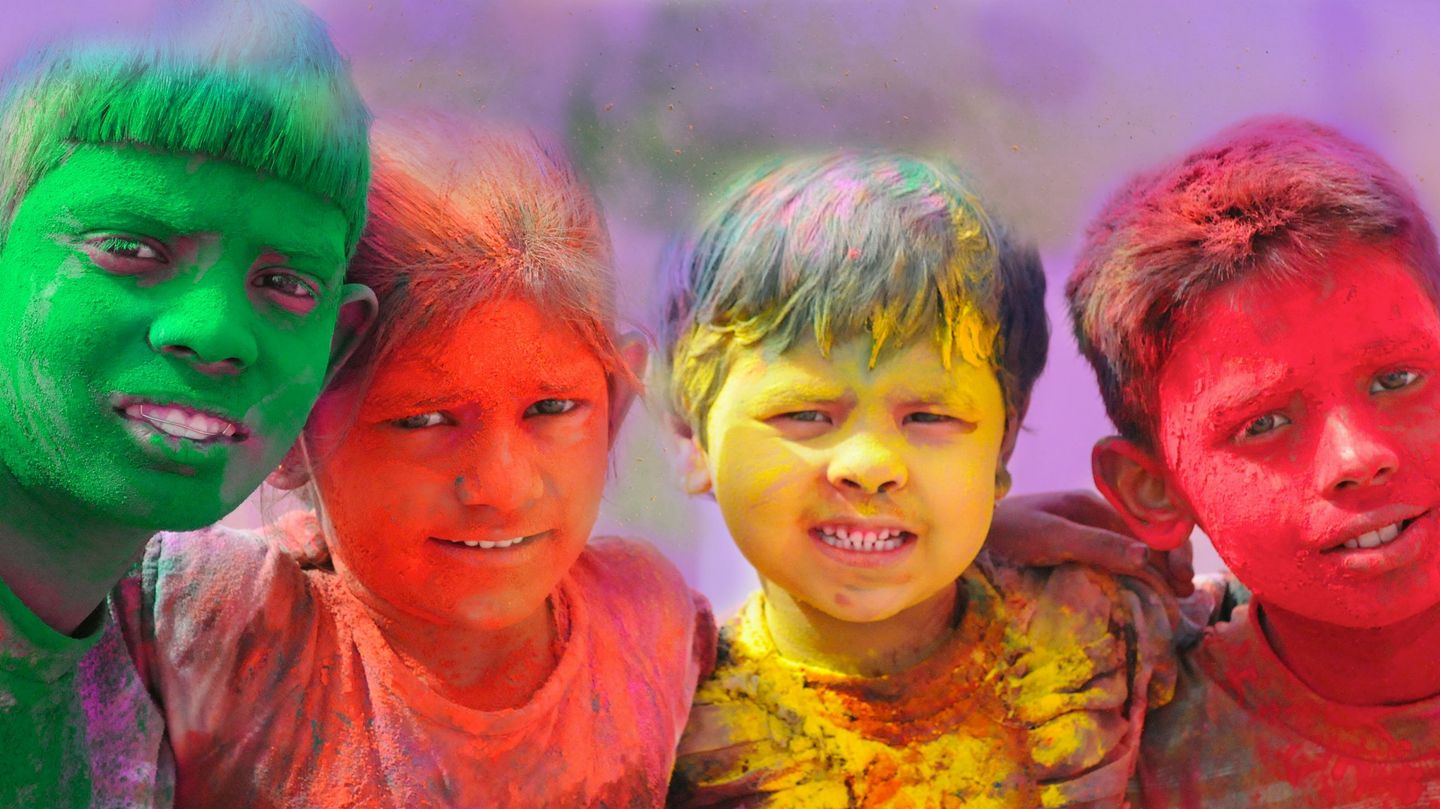
Photo : Bhaarat Singh
Holi is an important festival of India, celebrated all over the country and also other part of the world. It is the most colourful and vibrant festival of colours and fun. It falls in the month of March and marks the advent of spring season.
The mythological story for the origin of Holi is related with Holika, the devil sister of the demon king Hiranayakashyap. On instruction of the demon kind, Holika tried to burn Prahalad (son of Hiranayakashyap) in the big fire by taking him in her lap. Prahalad was a true devotee of GOD, and was saved from fire by the GOD. However Holika was burnt to ashes. From then this festival Holi is celebrated to mark the victory of good over evil.
As this festival is celebrated near the harvest season, all the people poor and rich have enough food to eat and new clothes to wear. Also behind the colours of gulal no one can differentiate the rich, poor, higher caste, lower caste thus this festival allows everyone to enjoy without any kind of discrimination. The relevance of the colourful festival Holi is to end and over come one’s past errors, to resolve the pending conflicts by meeting others, to start a new journey by forget and forgive. It teaches us to enrich our lives with love, harmony and peace.
Holi celebrations starts on the night before Holi with a Holika Dahan, where people gather, perform religious rituals in front of the bonfire, and pray that their internal evil be destroyed, the way Holika, was killed in the fire. The next day is celebrated as Rangwali Holi – a free-for-all festival of colours, where people from all works of life smear each other with colour-Gulal and hugging, wishing each other. Many places water guns and water-filled balloons are also used to play and colour each other. Anyone and everyone are fair in the game: friend or stranger, man or woman, children and elders. The festival is enjoyed with frolic and fight with colours in the open streets, open parks, outside temples and buildings. People with groups and family, carry drums and other musical instruments, visit family, friends and foes to throw coloured powders on each other, laugh and gossip, sing and dance, then share Holi delicacies, food and drinks. During Holi, some people indulge in intoxicating drinks (made from cannabis).
But there is another side of Holi, as now a day, Holi is proving to be an environmental risk due to the toxic colours used, water pollution, air pollution during the celebrations. Unlimited and uncontrolled use of such dyes, can lead to grave consequence in-terms-of human health and ecological balance. In ancient times Holi colours were extracted from plants like turmeric, neem, palash, etc., which has several positive health benefits. But now days, due to commercialisation, the market is flooded with synthetic colours, which are highly harmful to humans and causes Skin irritation, rashes, Asthma, swelling, allergy and also affects the eyes. The toxic colours also contaminate the water bodies and pose a danger for aquatic animals.
In order to maintain the essence of the Holi festival, it is better to use environment friendly organic natural colour, judicious use of water and optimal use of resources.
Holi gives the prefect opportunity to appreciate, rejuvenate and celebrate all relationships that matter to us. The celebrations bring the people together and bring out the collaborative sprit & brotherhood in them. It brings out the “empathy” side of man kind, which is so crucial in today’s rat-race times.
Author Bio : Hrishita Patnaik, a 6th standard student, DPS Sharjah, UAE. A participant of International Essay Competition, October.


